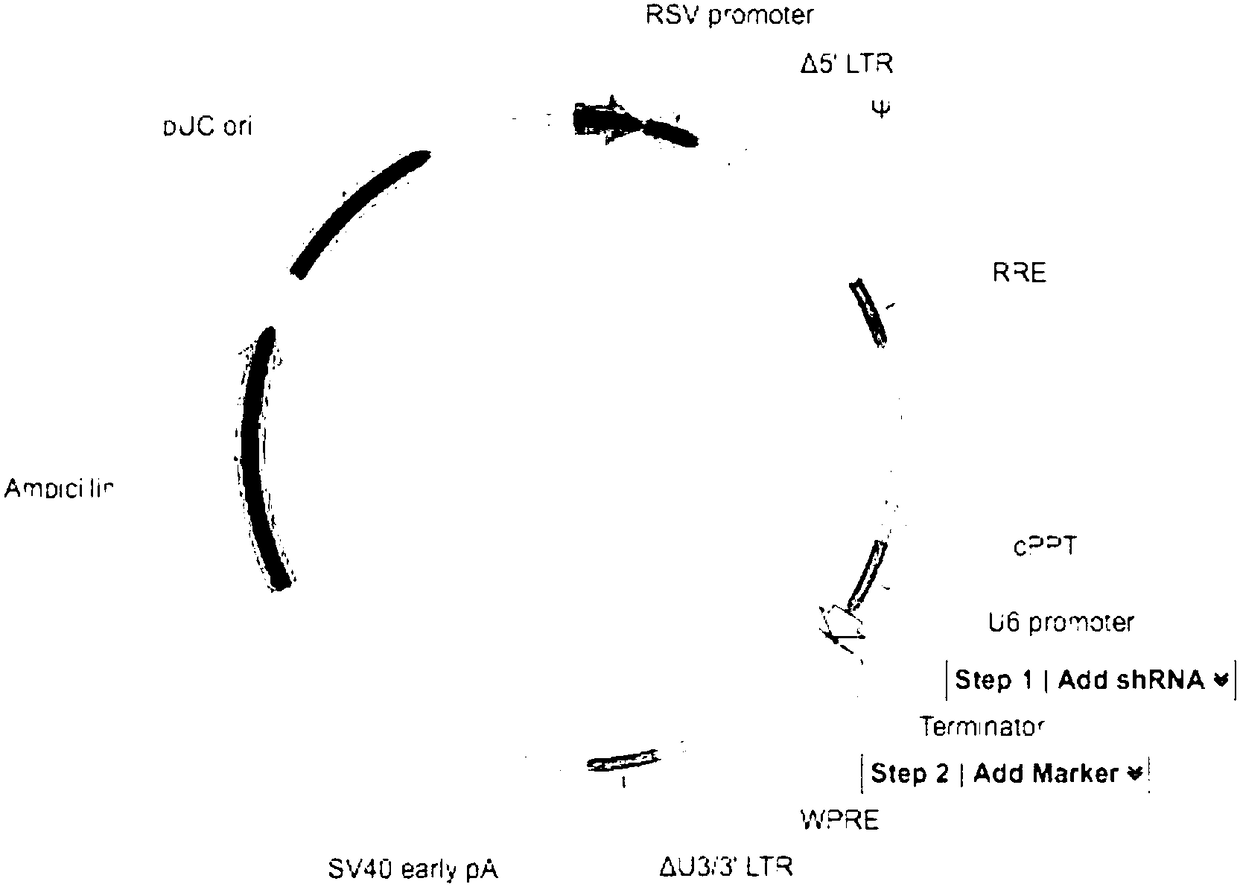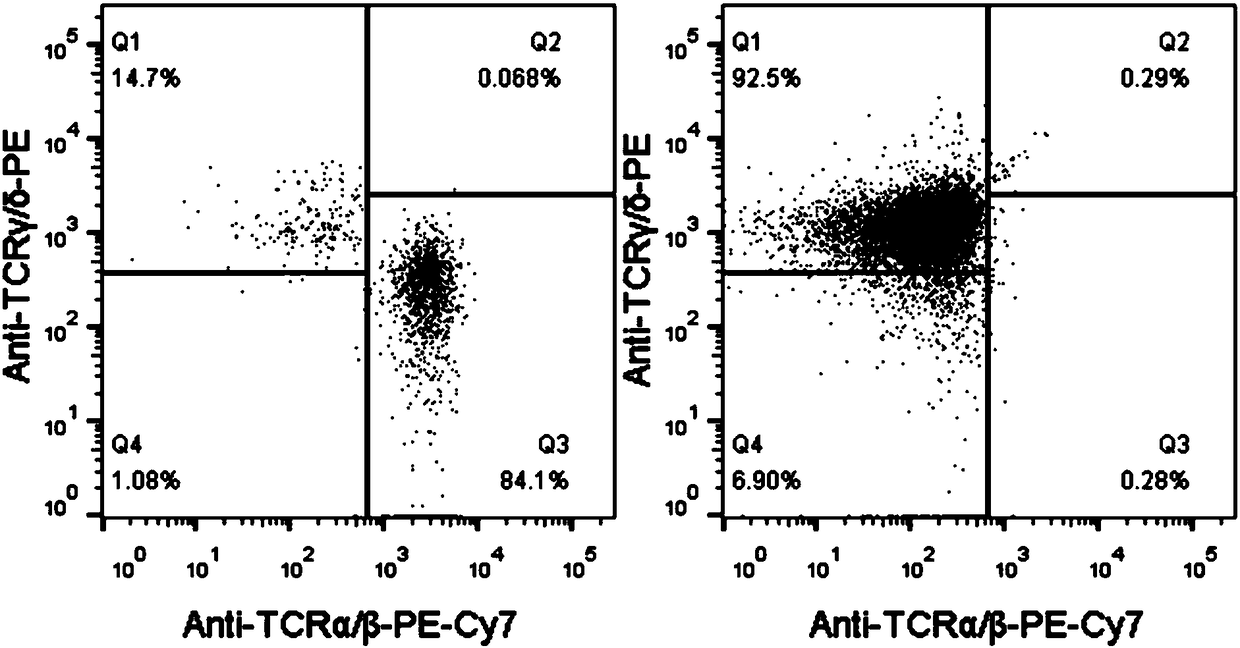Method for producing chimeric antigen receptor modified gamma delta T cell
A chimeric antigen receptor and cell technology, applied in the biological field, can solve the problems of low cell content, low purity of the final product, low transfection rate, etc.
- Summary
- Abstract
- Description
- Claims
- Application Information
AI Technical Summary
Problems solved by technology
Method used
Image
Examples
Embodiment 1
[0070] Example 1. A method for expanding γδT cells
[0071] 1. Construction of K562-shFPPS tumor cell line with reduced expression of FPPS
[0072] 1. Construction of lentiviral recombinant plasmid
[0073] (1) Preparation of recombinant plasmid
[0074] The U6-based shRNA construction system of the Vectorbuilder system of Saiye Biotechnology Co., Ltd. was used to construct the lentiviral recombinant plasmid. Specific steps are as follows:
[0075] Design and synthesize a specific shRNA coding sequence (shFPPS) targeting FPPS as the experimental group: (Sequence 1); wherein, the bold 6bp sequence in the middle is the stem-loop sequence, its left 21bp sequence is the sense sequence, and the right 21bp sequence is the antisense sequence; at the same time, the following Scramble-shRNA coding sequence (shSRB) was synthesized as a negative control Group: Among them, the bold 6bp sequence in the middle is the stem-loop sequence, the left 21bp sequence is the sense sequence, a...
Embodiment 2
[0115] Example 2. Production method of CAR-γδT cells
[0116] 1. Preparation of CAR22 lentiviral particles
[0117] In the present invention, the CAR structure is used to genetically modify γδT cells. The CAR structure from the amino terminal to the carboxyl terminal is: ScFv(CD22)-Hinge(CD8)-TM(CD8)-CD137-CD3ζ, that is, from the amino terminal to the carboxyl terminal in sequence It is: single-chain variable region, CD8a hinge region and transmembrane region, CD137 signal domain and CD3ζ chain intracellular region derived from CD22 monoclonal antibody (clone number: M971). Its amino acid sequence is shown in sequence 3 of the sequence listing, and its nucleotide sequence is shown in sequence 4 of the sequence listing. Insert the DNA molecule shown in Sequence 4 into the Senl_pLenti-EF1 vector (the Senl_pLenti-EF1 vector is a vector obtained by adding restriction sites PacI and SpeI on both sides of the original plasmid cloning site, and the original plasmid name is LV-pRRLEF...
PUM
 Login to View More
Login to View More Abstract
Description
Claims
Application Information
 Login to View More
Login to View More - R&D
- Intellectual Property
- Life Sciences
- Materials
- Tech Scout
- Unparalleled Data Quality
- Higher Quality Content
- 60% Fewer Hallucinations
Browse by: Latest US Patents, China's latest patents, Technical Efficacy Thesaurus, Application Domain, Technology Topic, Popular Technical Reports.
© 2025 PatSnap. All rights reserved.Legal|Privacy policy|Modern Slavery Act Transparency Statement|Sitemap|About US| Contact US: help@patsnap.com



